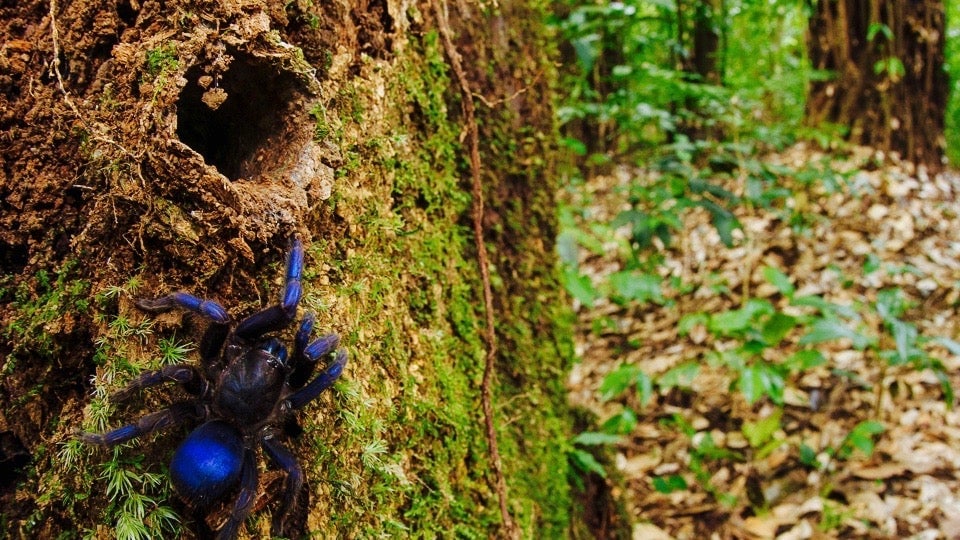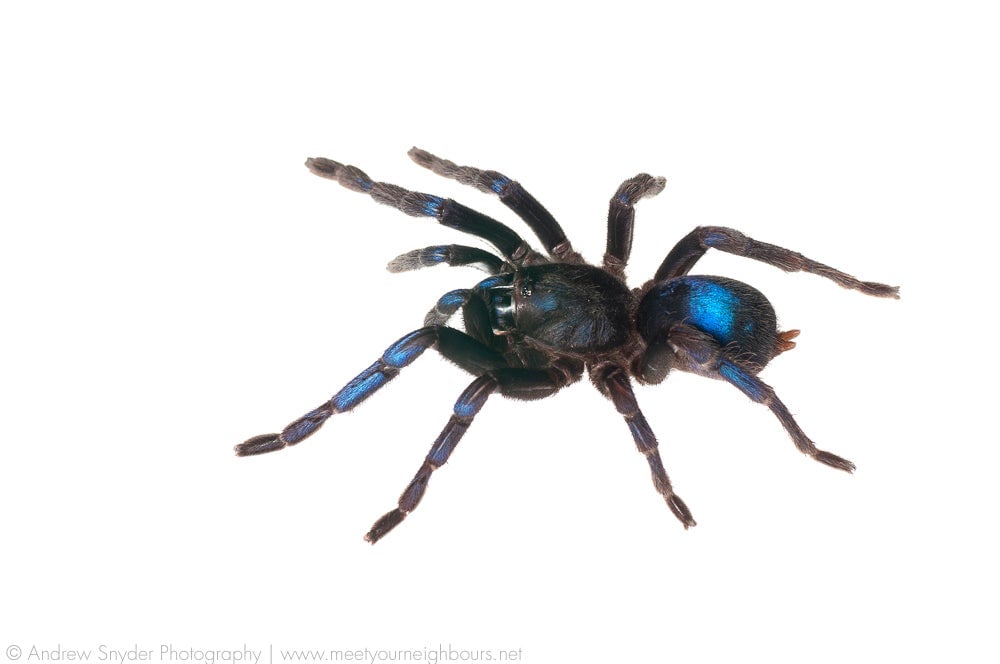A new species of blue tarantula treats trees like high-rise apartments
Herpetology is the study of creepy things—literally. Derived from the Greek word herpein, meaning “to creep,” herpetologists go in search of the very creatures most people wish to avoid: amphibians and reptiles like frogs and snakes. Sometimes they also get lucky and discover a totally new creepy species that’s not even in their field.


Herpetology is the study of creepy things—literally. Derived from the Greek word herpein, meaning “to creep,” herpetologists go in search of the very creatures most people wish to avoid: amphibians and reptiles like frogs and snakes. Sometimes they also get lucky and discover a totally new creepy species that’s not even in their field.
That’s what happened when herpetologist-photographer Andrew Snyder wandered around a forest in Guyana at night as a member of the Biodiversity Assessment team for the Global Conservation Fund and World Wildlife Fund. As he shined his flashlight around in the dark, Snyder spotted what he thought was a blue eye peering out of a hole in a tree stump, he explained in a Nov. 20 blog post.

To his surprise, it was not an eye but the hairy blue forelimbs of a never-before-seen type of cobalt blue tarantula. ”I have spent years conducting surveys in Guyana and have always paid close attention to the tarantula species,” he wrote. “I immediately knew that this one was unlike any species I have encountered before.”
Snyder was impressed with the invertebrate’s unique color, but even more surprising was his discovery that this type of tarantula (as yet unnamed or described officially) appears to live in a high-rise. The cobalt creature made its home in a hole in a rotted tree stump that it shared with other tarantulas, each of whom made its home in a separate hole. “Prior to this, I had only ever encountered individual tarantulas, either outside of a burrow…walking through the leaf-litter, or clinging to the sides of trees,” Snyder explained.
It’s too soon to say what exactly this means about the species. The cobalts may just tolerate their neighbors—begrudgingly, like most city dwellers—but it’s also possible that the separate stump apartments (holes) are connected by burrows.
Based on an initial photo assessment by a tarantula specialist, Snyder believes the blue creatures are part of the tarantula subfamily level ischnocolinae. Within this subfamily, some species are communal. But for now, all that’s definitively known about the new cobalt blue tarantula is that it needs much further study, plus a moniker.
Meanwhile, Snyder will continue to wander the world’s woods at night, his eyes ever-peeled for unique and creepy creatures.